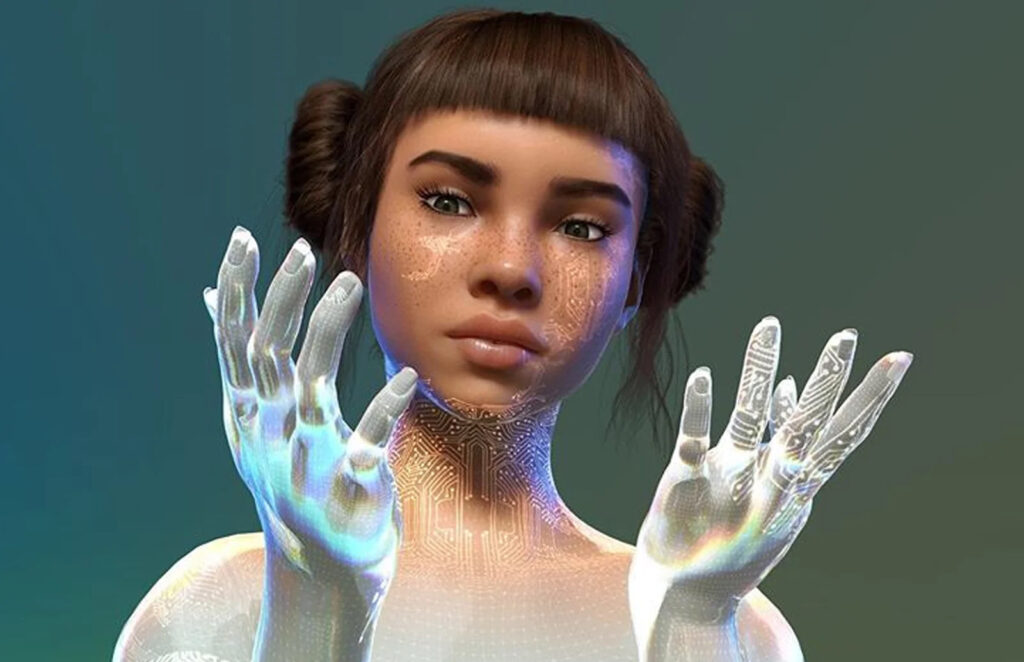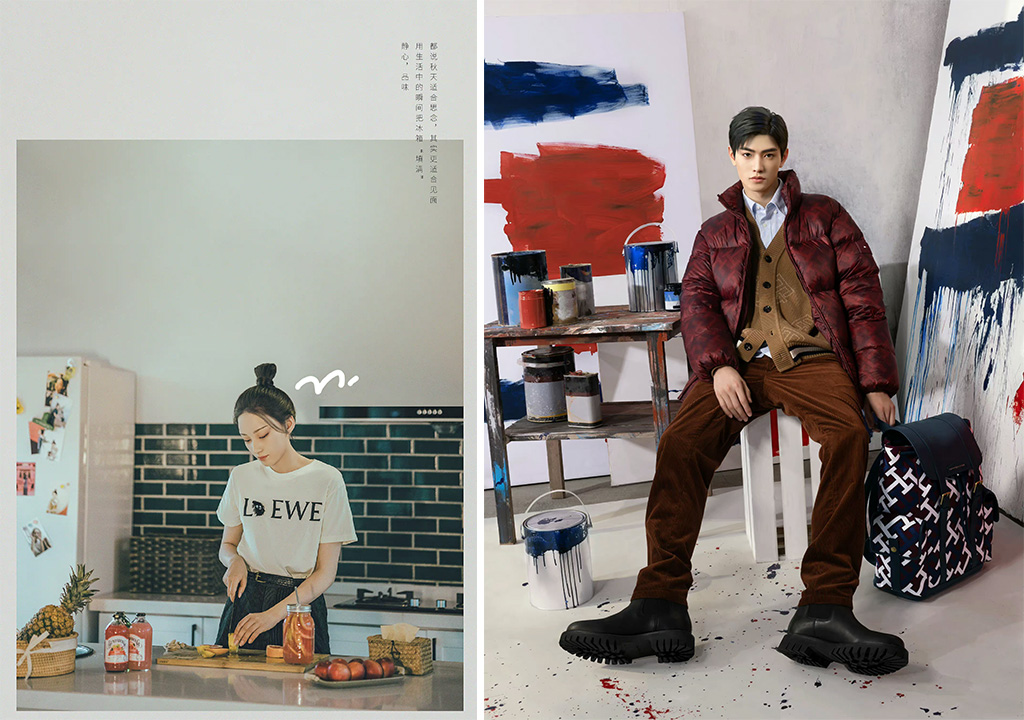The Advent of Virtual Influencers
In the digital era, where the boundary between reality and virtuality is blurred, a phenomenon is taking over the world – the rise of Virtual Influencers. These digital personas, powered by artificial intelligence, are more than mere creations of code and pixels. They possess distinct personalities, voices, and most importantly, they command a significant following. The global influencer market has seen exponential growth. Doubling since 2019 and reaching a staggering $16.4 billion in 2022. This rapid growth has fueled the rise of social commerce. More consumers researching and making purchases directly on social media platforms. Influencers, human and virtual, have become integral to marketing strategies for brands globally. They leverage their extensive follower base to influence purchasing decisions and drive sales.
Virtual Influencers vs. Real Influencers: A Paradigm Shift
The comparison between virtual influencers and real influencers is becoming a hot topic. While real influencers offer the warmth of human connection. Virtual influencers bring a unique fusion of creativity and innovation. A fusion that is captivating the younger, tech-savvy audiences. Issues from contract disputes, content disagreements to influencer scandals have become common. These issues can pose significant challenges for brands and potentially damage their reputation. So, how can these issues be addressed while maintaining the effectiveness of influencer marketing? The solution seems to lie in the realm of virtual influencers.
The Role of Virtual Influencers in Influencer Marketing
Virtual influencers are carving out their niche in the realm of influencer marketing. Brands are recognizing their potential and leveraging these digital celebrities. And that’s to reach audiences in innovative and engaging ways. With the assistance of experts, brands design virtual avatars. Such avatars possess similar aesthetic and personality traits to human influencers. This reflects brands’ interest in, and evolution into, digital worlds such as the metaverse. Brands in China and Southeast Asia have been pioneers in using virtual influencers.
The Birth of a Virtual Influencer: A Fusion of Art and Technology

The creation of a virtual influencer is a testament to the power of technology. It’s a fusion of art and AI, resulting in a digital persona that’s as engaging as it is innovative. Virtual influencers offer infinite creative possibilities. And that’s in terms of style, appearance, and environment. While also captivating the imagination of a digital-first audience. Reports suggest that virtual influencers have a higher engagement rate. HypeAuditor found that virtual influencers have engagement rates over three times higher than traditional counterparts.
Pioneers of the Digital Frontier: Examples of Virtual Influencers
Examples of virtual influencers are plentiful in today’s digital landscape. High-profile brands such as Prada, Balmain, and M&S have all launched virtual influencer campaigns. Demonstrating the popularity of this technology into commerce in luxury and mainstream sectors.
The Influence of Virtual Influencers on Instagram
Virtual influencers on Instagram are revolutionizing the platform. They’re not just posting photos. They’re creating engaging content that resonates with their followers. Proving that the unreal can indeed become the new real. The creation of virtual influencers allows brands to reach and engage a younger audience. And build a community of customers interested in this new form of technology.
The Future of Virtual Influencers
The future of virtual influencers looks promising. As technology continues to evolve, we expect more innovative and engaging virtual influencers. As consumers become familiar with digital worlds, virtual influencers are becoming more accepted. Human influencers, however, provide a level of authenticity to social media and Instagram campaigns. Allowing consumers to see how products can work for them in real life rather than in digital form. If brands can utilize each type of influencer, their social campaigns will appeal to a wider target market. The rise of Virtual Influencers is a great opportunity for brands, tourism agencies, and hoteliers to level up in their firms and stand out in a wild sea of competition.
The Ethical Implications of Virtual Influencers
As we delve deeper into virtual influencers, it’s crucial to consider the ethical implications. While the rise of virtual influencers offers exciting opportunities for brands and marketers. It also presents a new set of challenges and ethical dilemmas.
The Authenticity Debate
One of the most significant ethical concerns surrounding virtual influencers is authenticity. Real influencers are individuals who share their personal experiences. They are authentic in the sense that they are real people sharing real experiences. On the other hand, virtual influencers, while they mimic human behavior, are artificial creations. They do not have personal experiences or emotions to share. This raises the question: Can virtual influencers truly be authentic? And if not, what does this mean for the consumers who follow them and the brands they represent?
The Impact on Body Image and Self-Esteem
Another ethical concern is the potential impact of virtual influencers on self-esteem. Virtual influencers are often designed to embody idealized standards of beauty. They have flawless skin, perfect bodies, and trendy clothes. While this may make them visually appealing. It also sets unrealistic standards of beauty for their followers. This leads to negative self-perceptions and body image issues, particularly among younger audiences.
The Potential for Deception
The potential for deception is another significant ethical concern. Virtual influencers often present themselves as real entities. Blurring the line between reality and fiction. This leads to confusion and misinformation. Particularly among younger audiences who may not understand the nature of these entities. It’s crucial for brands and marketers to be transparent about virtual influencers’s nature. And to educate their audiences about the difference between real and virtual influencers.
The Impact on the Job Market
The rise of virtual influencers also raises concerns about the impact on the job market. As these digital entities gain popularity. They could potentially replace human influencers, leading to job losses in the industry. While it’s unclear how significant this impact will be. It’s an issue that warrants consideration. As the use of virtual influencers continues to grow.
The Legal Implications
Finally, the rise of virtual influencers presents new legal challenges. For instance, who owns the rights to a virtual influencer’s image? Who is responsible for the content they post? These are complex questions that will require new legal frameworks and regulations.
The Future is Virtual
Despite these ethical and legal challenges, the future of virtual influencers looks promising. As technology continues to evolve, we expect more innovative and engaging virtual influencers. If brands can utilize each type of influencer. Their social campaigns will appeal to a wider target market.
Conclusion
The emergence of virtual influencers is more than just a trend. It’s a transformative shift in the influencer marketing landscape. These AI-powered personas are redefining what it means to be an influencer. Proving that the unreal can indeed become the new real. The future of influencer marketing is here, and it’s virtual. At Branfluence, we love to keep you up-to-date about the latest trends and premium services in influencer marketing for your business to flourish. Whether you’re a hotelier, a brand owner, or a tourism agency owner, feel free to reach out or read from our blog to stay in the loop.
FAQs
What are virtual influencers?
Virtual influencers are AI-powered digital personas. With a personality, a voice, and a significant following.
How do virtual influencers differ from real influencers?
While real influencers offer human connection. Virtual influencers bring a blend of creativity and innovation captivating younger, tech-savvy audiences.
What role do virtual influencers play in influencer marketing?
Virtual influencers are carving out their niche in influencer marketing. With brands leveraging these digital celebrities to reach audiences in engaging ways.
How are virtual influencers created?
The creation of a virtual influencer is a blend of art and AI. Resulting in a digital persona that’s as engaging as it is innovative.
What can we expect from the future of virtual influencers?
As technology continues to evolve. We can expect to see even more innovative and engaging virtual influencers.
Useful Links:
The Rise Of Virtual Influencers And What It Means For Brands
